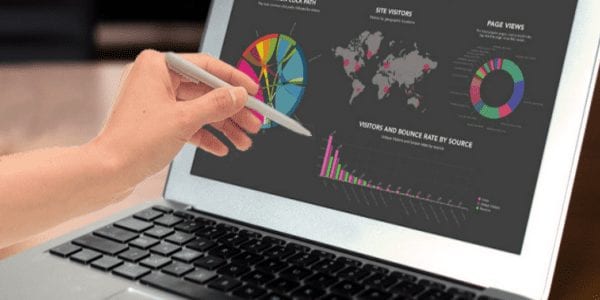Self-Service and Democratization: An Insider’s Take

 As part of our ongoing monthly editorial campaign at Solutions Review, I was lucky enough to have the opportunity to link up with Matt Schumpert, Director of Product Management at Datameer regarding our May BI topic of self-service and data democratization. As an industry insider, Matt was able to provide some great insights in our Q&A discussion on the trajectory of two important features in the space:
As part of our ongoing monthly editorial campaign at Solutions Review, I was lucky enough to have the opportunity to link up with Matt Schumpert, Director of Product Management at Datameer regarding our May BI topic of self-service and data democratization. As an industry insider, Matt was able to provide some great insights in our Q&A discussion on the trajectory of two important features in the space:
How important are data democratization and self-service? Are they growing? Are these just popular buzzwords, or are these features being deployed regularly within BI?
“It’s a necessity because I don’t ever think we’ll be in a state where business will move slow enough for the schema-driven, IT-driven approach to keep up with the appetite for analytics and reports, the change in business, and the change in the data that drives business. We’ve already reached that threshold where there aren’t enough IT resources and there won’t be anytime soon to do it for us through a service desk model. We’ve also reached the point a while back when for a lot of companies, many of their questions would be too rapidly evolving to be encoded within or partially encoded within a data warehouse regime.
Asking for reports is increasing, the channels that are generating data for them to look at that are are increasing, and everyone is competing based on that. They’re not doing surveys of customers, they’re interacting with customers digitally, so all the ingredients are there for everything to move to self-service, assuming the tools are good enough for a non-technical person. Companies need to make it easy enough so self-service is really possible for the more casual user and not necessarily the specialist. I think it’s a foregone conclusion, if you look at the growth rate of the second-generation BI companies like Qlik and Tableau vs. the first generation right now, there’s no comparison.
Reporting used to be in a dusty back office somewhere, the guys building the predictive models were in the corner somewhere, and nobody knew what they are doing. It was a very opaque business. Nobody understood the magic of their algorithms, it was hard to gain access to their data, hard for them to be able to clean it up or repair it, hard for them to churn out and produce models quickly, and the lifecycle was very long, the lead time was very long, so in a way, there’s an even bigger benefit there. There’s probably not as many [self-service] users as there are for BI, but the state of the art was so much worse and was so much less accessible. The benefit of making analytics easy enough for self-service is great and there may be 10 users or 100 users, not 10,000 users doing the data mining, but the value of the insights they gain can be enormous. We find people with these “aha” moments saving tens of millions or 100 million dollars on oil well optimization or capacity planning for a network in a big telco based on these analytics, so they can be very big wins by a small number of users.”
Can anyone armed with a smartphone and a BI solution be a data analyst?
“Our products work on iPads. Smartphones, not so much. If you look at Salesforce for example, they’re definitely pushing their analytics product out to the very casual user. Yes, anyone can be a data analyst, almost anyone can profit from being a data analyst, it’s a question of whether there is someone else to do that work for them or not. The number of decisions that even salespeople would make based on data is rising. There’s only so many people who can do the work for you from a central IT function until its untenable. As more and more of our daily decisions become data-driven, more and more end-users who don’t have data analyst in their title would be performing some kind of data analysis. Look at marketing, today marketing is totally a data-driven exercise, it wasn’t the case 20 years ago.
It’s a question of whether the tool is simple enough for that user with that data; either they are able to [use it] or they’re not, and the devil is in the details regarding the tool, the feature set, and the situation. Certainly, that is what everyone is driving for and articulating to the market because of the situation that traditional BI is in. The old factory model for data is untenable.”
Are there any advancements coming that will allow for the mobile devices to catch up with computers for self-service BI? It’s going to be tough to do, right?
“Yes. For me, I don’t have anywhere near the kind of productivity on a tablet or smartphone as I do with my keyboard and mouse. Maybe eventually, but for some folks, typing SQL is the easiest way, and as the level of sophistication in what you’re doing goes up, the more its hard for me to imagine parody on a mobile device, but maybe we’ll be wowed.”
Click here for Part 2 of my interview with Datameer’s Matt Schumpert.






























